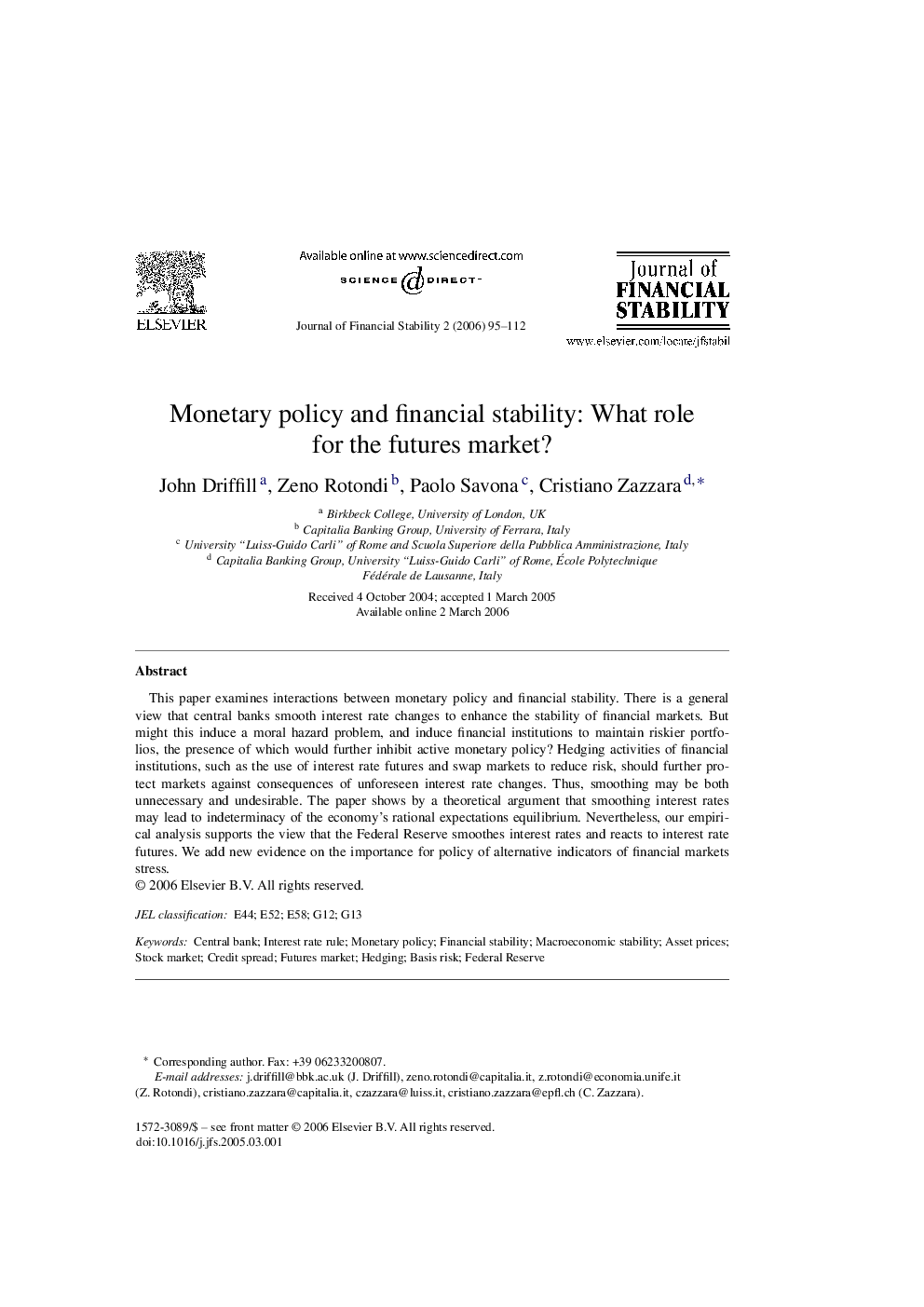| Article ID | Journal | Published Year | Pages | File Type |
|---|---|---|---|---|
| 999345 | Journal of Financial Stability | 2006 | 18 Pages |
This paper examines interactions between monetary policy and financial stability. There is a general view that central banks smooth interest rate changes to enhance the stability of financial markets. But might this induce a moral hazard problem, and induce financial institutions to maintain riskier portfolios, the presence of which would further inhibit active monetary policy? Hedging activities of financial institutions, such as the use of interest rate futures and swap markets to reduce risk, should further protect markets against consequences of unforeseen interest rate changes. Thus, smoothing may be both unnecessary and undesirable. The paper shows by a theoretical argument that smoothing interest rates may lead to indeterminacy of the economy's rational expectations equilibrium. Nevertheless, our empirical analysis supports the view that the Federal Reserve smoothes interest rates and reacts to interest rate futures. We add new evidence on the importance for policy of alternative indicators of financial markets stress.
